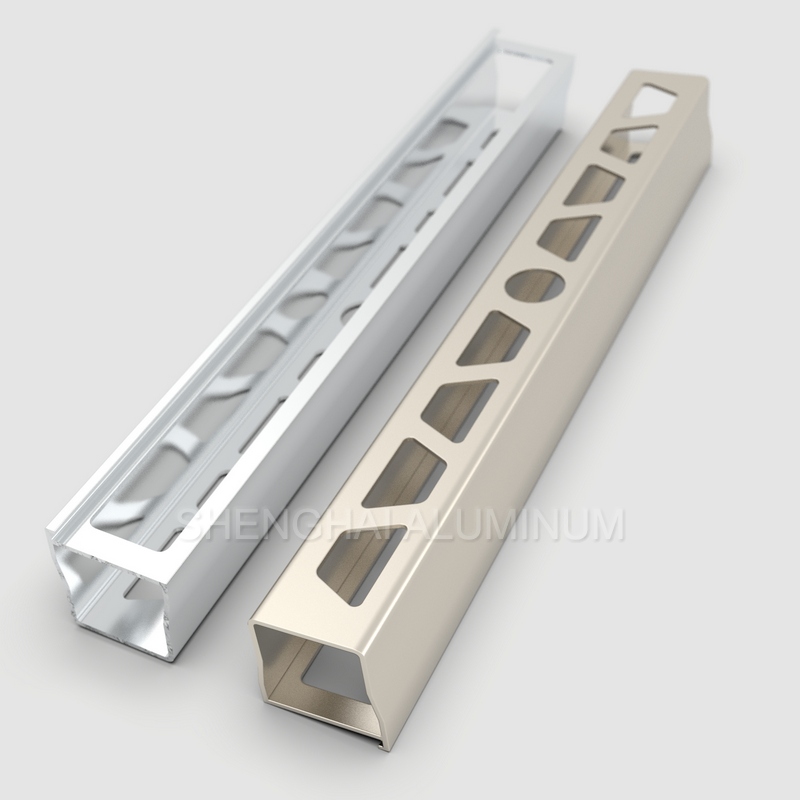Professional aluminum extrusion and processing integrated service – -round solution to your aluminum fabrication service needs
In today’s industrial manufacturing field, aluminum profiles have become an indispensable material for construction, transportation, electronics, machinery and other industries due to their excellent properties such as light weight, high strength, corrosion resistance and easy processing. Shenghai Aluminum, as a professional aluminum profile extrusion and processing integrated service provider, is committed to providing customers with full-process solutions from raw materials to finished products to meet various complex aluminum profile fabrication needs.

Advantages of integrated service: seamless connection from extrusion to finishing
Different from the traditional decentralized processing mode, we provide integrated aluminum extrusion and processing services, organically combining two key production links to create unique value for customers:
Shorten delivery cycle: Eliminate intermediate transportation and communication links, and increase production efficiency by more than 30%
Reducing overall costs: Integrated production reduces material waste and secondary processing costs
Quality is fully controllable: Quality monitoring from extrusion to processing to ensure product consistency
Continuous technical support: Engineers participate throughout the process and provide professional technical support from design to finished products
Advanced extrusion technology: meet various complex cross-section requirements
We are equipped with 700-3000 ton modern extrusion production lines, which can produce aluminum profiles of various specifications:
Architectural aluminum profiles: doors and windows, curtain walls, sun rooms, decorative lines
Industrial aluminum profiles: assembly line frames, equipment guardrails, mechanical parts
Special purpose profiles: radiators, rail vehicle materials, electronic housings
Customized special profiles: develop special cross-section profiles according to customer drawings or samples
Use isothermal extrusion technology and online quenching system to ensure uniform profile structure and excellent mechanical properties. The maximum extrusion length can reach 26 meters, meeting the needs of extra-long profiles.
Precision processing capabilities: from simple cutting to complex CNC processing
Relying on advanced processing equipment and rich industry experience, we provide comprehensive aluminum profile fabrication services:
Cutting processing:
High-precision sawing (tolerance ±0.1mm)
Angle cutting (45°, 90° and other arbitrary angles)
Special-shaped cutting (customized according to drawings)
Drilling and tapping:
Ordinary drilling, step holes, countersunk holes
Precision thread processing (M3-M20)
Multi-hole batch processing
CNC processing:
Three-axis/four-axis/five-axis CNC milling
High-precision turning processing
Complex curved surface and three-dimensional structure processing
Surface treatment:
Anodizing (natural color, black and other colors)
Powder spraying (various Color optional)
Electrophoretic coating, fluorocarbon spraying, etc.
Industry solutions: Provide professional services for different fields
We have a deep understanding of the special needs of various industries for aluminum profiles and provide targeted solutions:
Construction industry
Energy-saving door and window system profiles
Curtain wall support structure
Decorative profiles
Special profiles for sunrooms
Transportation
Aluminum profiles for rail transit vehicles
Lightweight automotive parts
Truck compartment structural parts
Corrosion-resistant profiles for ships
Electronic appliances
Radiator profiles
Equipment housing frame
Precision instrument bracket
Special profiles for conductive bars
Industrial manufacturing
Automation equipment frame
Assembly line conveyor system
Mechanical protection device
Special material for tooling and fixtures
Why choose us?
15 years of industry experience: Served 500+ customers and completed 2000+ projects
Strong technical team: 15 professional engineers provide technical support
Strong customization ability: One-stop solution from drawings to finished products
On-time delivery: 7-15 days for conventional products; urgent orders can be expedited
Whether you need standard aluminum profiles or special customized products, we can provide cost-effective solutions. From concept design to finished product delivery, our team of experts will accompany you throughout the process to ensure the smooth completion of your aluminum processing project.
Contact us now to get exclusive aluminum profile solutions! Our engineers will respond to your inquiries within 24 hours and provide professional advice and quotation services. Let us use our professional aluminum profile extrusion and processing integration capabilities to create greater value for your project!








 The 2016 Chinese Lunar New Year will be on Feb. 8 and it is the year of the Monkey. Think Christmas but the date varies based on the lunar calendar, however, it normally falls between mid-Jan to end of Feb.
The 2016 Chinese Lunar New Year will be on Feb. 8 and it is the year of the Monkey. Think Christmas but the date varies based on the lunar calendar, however, it normally falls between mid-Jan to end of Feb.